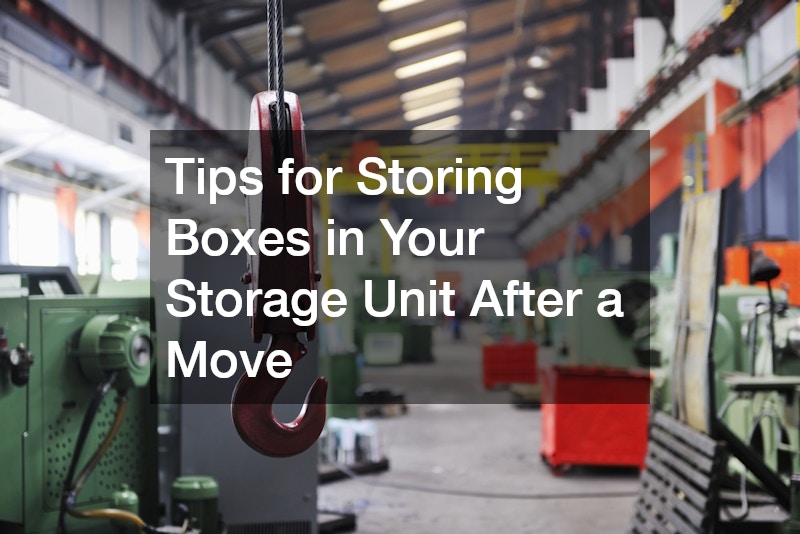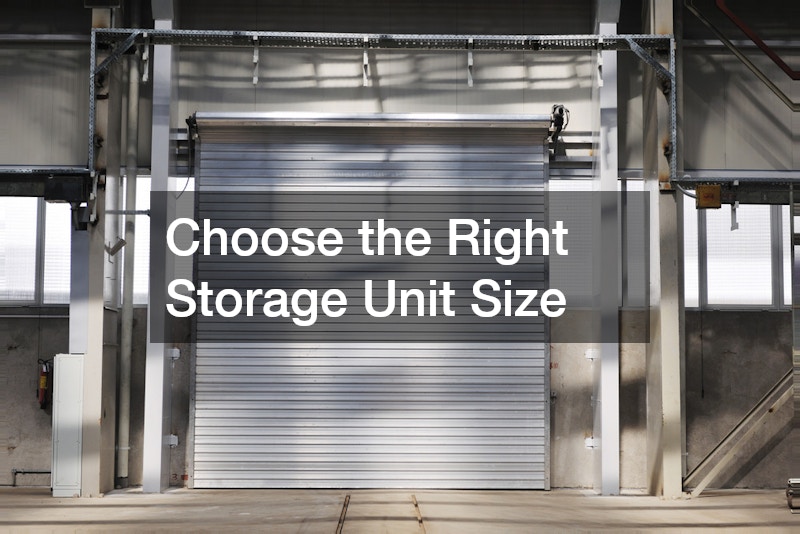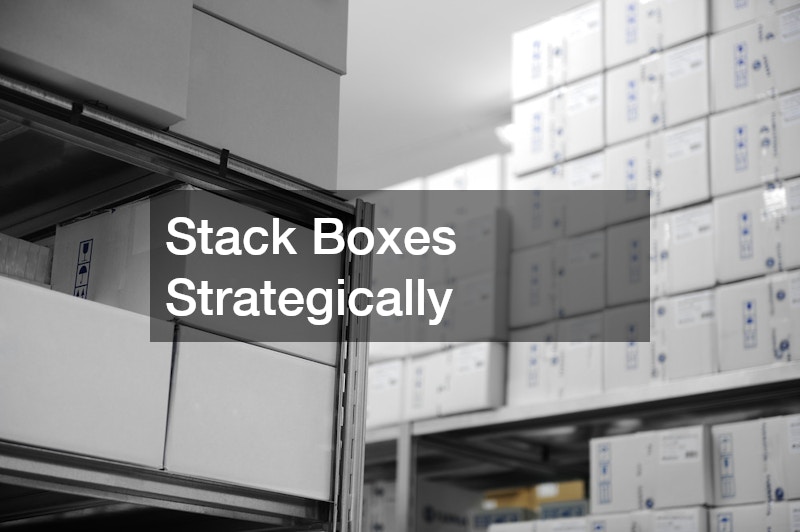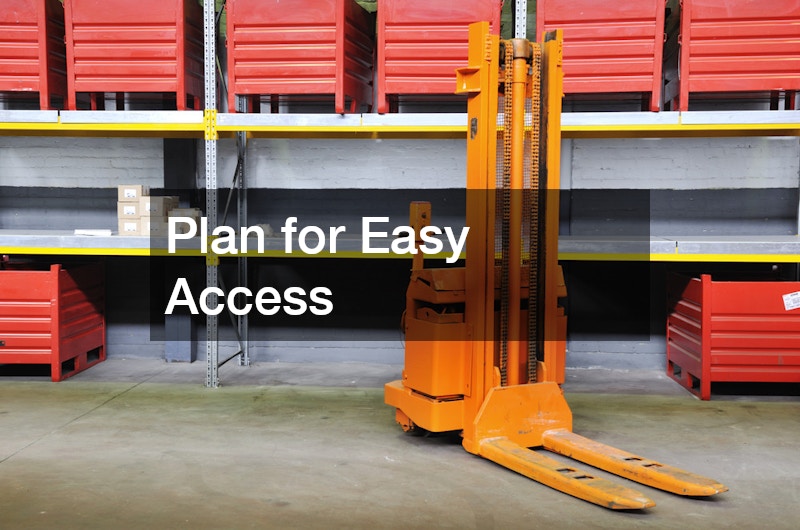

When it comes to storing boxes in a storage unit, proper organization and planning are key to maximizing space and keeping your belongings safe. Whether you are moving, decluttering, or just need extra storage space, following these tips will help you make the most out of your storage unit.
Choose the Right Storage Unit Size

Before you start storing boxes in a storage unit, make sure you choose the right size for your needs. Local moving services often offer recommendations based on the number of boxes you have, so it’s important to communicate your needs clearly. A unit that is too small will leave you cramped for space, while a unit that is too large will end up costing you more money than necessary. Take inventory of your boxes and any furniture you plan to store to ensure you select the appropriate size.
In addition to the size of the unit, consider the layout of the storage facility. Some units may have high ceilings or narrow corridors that make it difficult to maneuver large items. If you have oversized furniture or appliances, make sure the unit can accommodate them without issue. Choosing the right storage unit size will make storing items a much smoother process.
Lastly, factor in how often you will need to access your items. If you plan on frequent visits to your storage unit, opt for a larger size to allow for easier movement and organization. On the other hand, if you plan on storing items long-term and don’t require regular access, a smaller unit may suffice.
Use Quality Packing Materials
When storing boxes in a storage unit, it’s important to use quality packing materials to protect your belongings. Moving companies often sell durable boxes and packing supplies that are designed to withstand the rigors of transportation and storage. Investing in quality materials will help prevent damage to your items while they are in storage.
In addition to sturdy boxes, consider using bubble wrap, packing peanuts, and furniture covers to further protect your belongings. Wrap fragile items individually and secure them in boxes to prevent shifting during transport. Label your boxes with fragile stickers to alert movers and storage facility staff to handle them with care.
When packing boxes, make sure they are sealed tightly with packing tape. This will not only prevent items from falling out but also keep out dust and pests. By using quality packing materials, you can rest assured that your items will remain safe and secure while in storage.
Label Your Boxes Clearly
One of the most important tips for storing boxes in a storage unit is to label them clearly. Local moving companies recommend using a permanent marker to indicate the contents of each box as well as which room they belong in. This will make it easier to find specific items when you need them without having to rummage through all your boxes.
When labeling your boxes, consider creating an inventory list that corresponds to each box. This will help you keep track of what items are stored and where they are located. Attach the list to the outside of the box or keep it in a separate notebook for easy reference. By labeling your boxes clearly, you can streamline the storage process and save time when accessing your items.
For added organization, color code your boxes based on room or category. For example, use blue boxes for kitchen items and red boxes for bedroom items. This visual cue will help you quickly identify which boxes to retrieve without having to read each label. Labeling your boxes clearly is a simple yet effective way to stay organized while storing items in a storage unit.
Stack Boxes Strategically

When storing boxes in a storage unit, it’s important to stack them strategically to make the most of the space available. A moving service often recommends placing heavier boxes on the bottom and lighter boxes on top to prevent crushing and damage. This will also create a stable base for stacking additional boxes.
To maximize space, stack boxes vertically rather than horizontally. This will allow you to fit more boxes within the unit and make it easier to access items when needed. Leave narrow walkways between stacks of boxes to create a clear path for retrieving items without toppling over the stacks.
If you have fragile items, consider placing them on top of stacks of boxes to avoid crushing or breakage. Use shelving units or pallets to provide additional support for fragile items and prevent them from getting damaged. By stacking boxes strategically, you can optimize the space in your storage unit and keep your items safe and secure.
Keep Similar Items Together
When storing boxes in a storage unit, it’s helpful to keep similar items together for easy organization and retrieval. A local moving company may recommend grouping boxes by room or category to streamline the storage process. This will make it easier to find specific items when you need them without having to search through all your boxes.
Consider creating designated areas within the storage unit for different types of items, such as seasonal decorations, clothing, or kitchen supplies. This will help you stay organized and prevent boxes from becoming disorganized over time. Use shelving units or storage bins to further categorize and group similar items together.
By keeping similar items together, you can save time and effort when accessing your storage unit. This simple organization tip will make it easier to find what you need and keep your storage unit neat and clutter-free.
Leave Space for Airflow
When storing boxes in a storage unit, it’s important to leave space for airflow to prevent moisture buildup and mold growth. Local movers recommend leaving a small gap between boxes and the walls of the unit to allow for proper ventilation. This will help regulate humidity levels and protect your items from damage.
Avoid stacking boxes directly on the floor of the storage unit, as this can block airflow and create a breeding ground for pests. Use shelving units or pallets to elevate boxes off the ground and promote better ventilation. Leave space between stacks of boxes to allow for air circulation and prevent condensation.
Consider placing moisture-absorbing products, such as silica gel packets or dehumidifiers, in your storage unit to further control humidity levels. This will help protect delicate items, such as clothing or electronics, from moisture damage. By leaving space for airflow, you can ensure that your items remain dry and well-ventilated while in storage.
Consider Climate Control

When storing boxes in a storage unit, consider opting for climate-controlled units to protect your items from extreme temperatures and humidity. Storage units with climate control are ideal for storing delicate items, such as electronics, artwork, or antiques, that are sensitive to fluctuations in temperature. Local storage facilities offer climate-controlled options that maintain a consistent environment year-round.
Climate-controlled units are also beneficial for items that are prone to mold or mildew, such as clothing, furniture, or books. By regulating temperature and humidity levels, climate-controlled units provide an added layer of protection against moisture and pests. Keep in mind that climate-controlled units may come at a higher cost, but the investment is worth it to preserve your valuable items.
If you live in an area with extreme weather conditions, such as high heat or humidity, climate-controlled storage is a smart choice to safeguard your belongings. Consult with your local storage facility to learn more about climate-controlled options and how they can benefit your storage needs.
Utilize Shelving Units
When storing boxes in a storage unit, consider using shelving units to maximize vertical space and keep your items organized. Indoor storage facilities often offer shelving units for rent or purchase to help customers optimize the space in their units. Shelving units are ideal for stacking boxes, bins, and other supplies to create a more efficient storage system.
By using shelving units, you can create additional storage space and keep your items off the floor to prevent damage from moisture or pests. Label shelves with categories or items stored on each level to make it easier to find what you need. Utilize vertical space by stacking boxes on shelves up to the ceiling to maximize storage capacity.
Shelving units are also helpful for storing items that are delicate or prone to damage, such as fragile collectibles or electronics. Place fragile items on higher shelves to keep them out of reach and reduce the risk of breakage. By utilizing shelving units, you can create a more organized and efficient storage layout in your unit.
Avoid Overpacking Boxes
When storing boxes in a storage unit, it’s important to avoid overpacking to prevent damage and make it easier to access your items. Self storage facilities recommend filling boxes to the top without overstuffing them to maintain structural integrity and prevent items from shifting during transport. Use packing materials, such as bubble wrap or packing peanuts, to fill empty spaces and provide cushioning.
Heavy items should be distributed evenly among boxes to prevent them from becoming too heavy to lift or carry. Use smaller boxes for dense items, such as books or dishes, and larger boxes for lighter items, such as bedding or clothing. Seal boxes tightly with packing tape to prevent items from falling out and protect them from dust and pests.
Avoid stacking boxes too high or creating unstable stacks that may topple over. Place heavier boxes on the bottom and lighter boxes on top to create a stable foundation. By avoiding overpacking boxes, you can protect your items from damage and ensure they remain organized and accessible while in storage.
Regularly Inspect Your Storage Unit
When storing boxes in a storage unit, it’s important to regularly inspect the unit to ensure that your items are safe and secure. Local storage facilities recommend checking on your storage unit every few months to assess the condition of your items and look for signs of damage or pests. Inspect boxes for any signs of mold, mildew, or pests and address any issues promptly.
Check the integrity of boxes and packaging materials to make sure they haven’t been compromised over time. Replace damaged boxes or packing materials to prevent further damage to your items. Dust or sweep the storage unit regularly to keep it clean and free of debris that can attract pests.
If you notice any problems during your inspections, contact the storage facility immediately to address the issue. They can provide guidance on how to remedy the situation and prevent further damage to your items. By regularly inspecting your storage unit, you can catch problems early and maintain the quality of your stored items.
Plan for Easy Access

When storing items in a storage unit, plan for easy access to your items by organizing them strategically and creating clear pathways. Storing items should be done with accessibility in mind to make it easier to find specific items when needed. Leave narrow walkways between stacks of boxes and create designated areas for different categories of items.
If you have items that you will need to access frequently, place them towards the front of the unit or on higher shelves for easy retrieval. Label boxes clearly and create an inventory list to help you quickly find what you’re looking for. Keep a clear path to the door of the unit to make it easier to transport items in and out.
Consider grouping similar items together and using color-coded labels for easy identification. Create a layout plan for your storage unit to make it easier to navigate and locate specific items. By planning for easy access, you can streamline the process of storing and retrieving items from your storage unit.
Storing items in a storage unit doesn’t have to be a daunting task when you follow these tips for organization and planning. By choosing the right storage unit size, using quality packing materials, and labeling boxes clearly, you can make the most of your storage space and keep your items safe and secure. Remember to stack boxes strategically, keep similar items together, and leave space for airflow to prevent damage. Consider climate-controlled units, utilize shelving units, and avoid overpacking boxes to optimize your storage layout. Regularly inspect your storage unit and plan for easy access to make storing boxes a smooth and efficient process. Whether you are moving, decluttering, or just need extra storage space, these tips will help you stay organized and make the most of your storage unit. With proper planning and organization, you can create a functional and accessible storage space for your belongings.